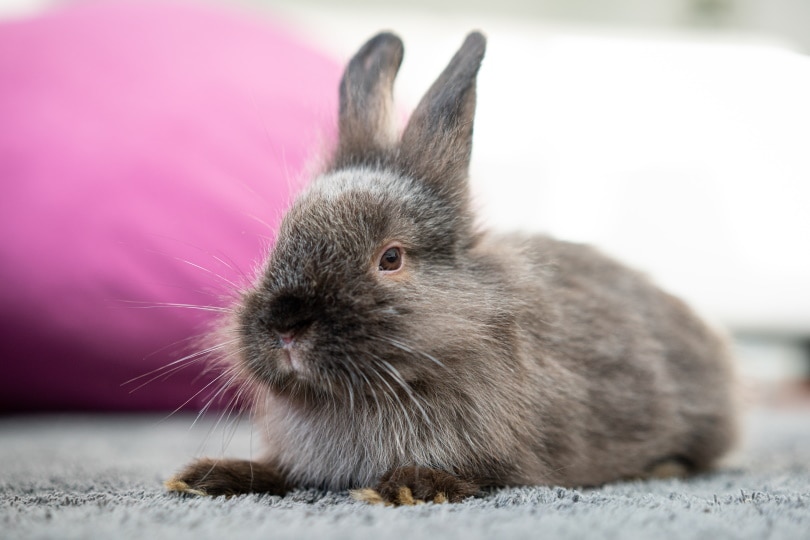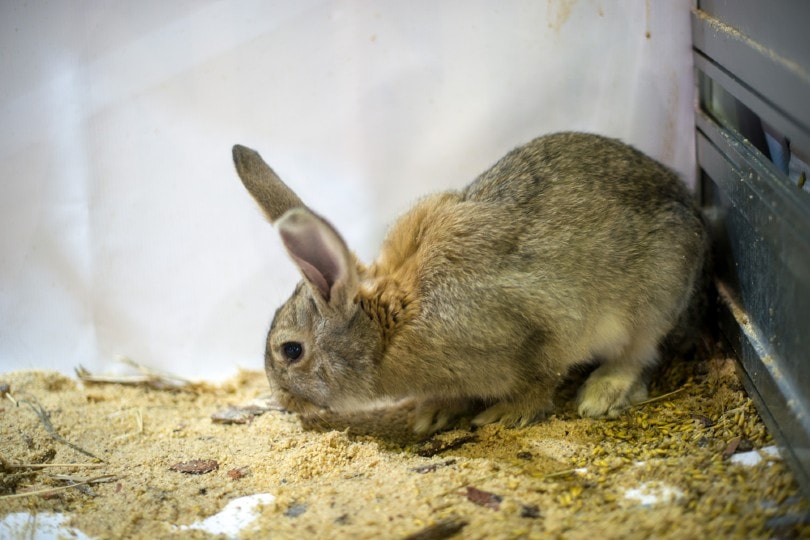
Rabbits are fun pets to keep around because they aren’t loud, they don’t take up much space, and they can be kept in an enclosed habitat to ensure their safety and for your convenience. However, keeping a rabbit in a cage all the time can interfere with your ability to properly bond with your pet and inhibit their ability to get the exercise and mental stimulation that they need for a happy and healthy life.
Fortunately, it’s possible for your rabbit to “free range” within your home for extra freedom and not much-added risk of danger—with proper care and management, of course. But what does “free range” mean in this capacity, and what steps should be taken to make free roaming around the house safe for your pet? We laid out all the information that you need for a smooth transition right here!
What Does “Free Range” Actually Mean?
A rabbit that roams in the wild is considered a free-range animal. However, in this case, “free range” means a rabbit does not live in an enclosure and instead lives openly in the house like everyone else does. Some rabbits roam free in their homes full time, while others only do so when human companions decide to let them. Either way, a free-range domesticated rabbit can move around the house as they see fit, sometimes even when their human caretakers are not there to look after them.

The Benefits of Letting Your Rabbit Roam Free in Your Home
While allowing your rabbit to roam free in your home comes with commitments and challenges that can’t be avoided, the benefits of doing so can outweigh the negative aspects:
- Weight Control — Allowing your rabbit to roam around the house gives them the opportunity to get plenty of exercise and reduces the risk that they will become overweight as time goes on.
- Bladder Health — Rabbits are prone to developing bladder stones and “sludge,” which can harm their overall health. Engaging in various activities throughout the day can help prevent these problems. Freely roaming around the house should provide your rabbit with enough movement to make a difference in their bladder health.
- Bone and Joint Strength — Plenty of exercise for your rabbit each day will help keep their bones and joints strong and in good shape so they don’t end up developing problems like arthritis as they age.

The Risks of Allowing Your Rabbit to Roam Free in Your Home
Just as there are benefits to letting a rabbit roam free in their home environment, there are risks too. For example, rabbits like to chew, so you could end up dealing with ruined belongings if your home is not adequately rabbit proofed. Other risks that owners face when housing free-range rabbits include:
- The possibility that their rabbit will swallow something that they shouldn’t
- The chance that their rabbit will get stuck under a piece of furniture or in a closet
- The risk that their bunny will get shocked or otherwise injured when chewing on an electrical cord
- The possibility that the rabbit will get outside when people enter/exit or accidentally leave an exterior door open
The 3 Steps to Letting Your Rabbit Roam Your House
Now let’s talk about the steps that you can take to safely let your rabbit roam free throughout your home. The process doesn’t have to be long or drawn out, but there are certain preparations to make and techniques to use once you let your rabbit go free.
1. Rabbit-Proof Your Home

The most important thing to do before you even think about letting a rabbit roam around loose in your house is to rabbit-proof everything. This means making sure dangerous items are out of your rabbit’s reach, spaces where destruction can take place are blocked off, and belongings that you don’t want to be chewed are kept off the ground. Specifically, you should do the following:
- Block Off Areas Where Wires and Cords Are Located — Make sure your bunny cannot reach electrical cords or wires, so they don’t become chew toys. If your rabbit chews on wires and cords, it can result in the inability to get power to an important appliance and worse, serious injury or even death for your rabbit. Use furniture, baby gates, and/or plastic wire tubing to ensure that your rabbit cannot access anything electrical.
- Cover Damaged Carpeting and Baseboards — If a rabbit finds a piece of carpeting that is frayed or is coming loose from the floorboards, they are likely to start digging at and chewing up the area. This could result in them accidentally consuming or choking on pieces of carpet and even more damage to the carpet overall. Therefore, it is a good idea to cover damaged carpeting with plastic mats or area rugs. Also, some rabbits like chewing on baseboards, especially in the corners of homes. Scratching pads for cats can be cut to size and installed in the corners of your home to prevent corner baseboard digging if necessary.
- Protect Your Furniture — Many rabbits like chewing on furniture legs simply due to instincts. If cushions are within reach, those might become chewing toys too. You can wrap furniture legs with scratching strips for cats or burlap material to protect them from being chewed. Also, make sure your rabbit cannot get on top of your furniture unless you are there to supervise their behavior. Put away low-height tables, stools, and other items that can be used as steps for your rabbit to use in an attempt to get on the couch or armchair.
- Block Off Tight Areas — Your rabbit should not be hiding underneath your bed where there might be items that they can choke on. They also should not have access to places like behind the fridge and stove. Fortunately, blocking these areas off is easy to do. You can turn wire shelves into fencing and install it along the base of your bed and couch and in the areas between appliances and walls.
- Pick Up Anything Dangerous or at Risk of Destruction — This is crucial to keep in mind when rabbit-proofing your home, especially if kids live with you. Shoes, socks, clothing, blankets, pillows, and children’s toys can all become chew toys for a rabbit. When that happens, chances are that the item in question will get ruined. Items like bottle caps and small toys (e.g., Hot Wheels cars) can be choking hazards for your rabbit. So, make it a daily habit to check the floors of your home for any items that need to be picked up.
2. Litter Train Your Rabbit

Before your rabbit is allowed to freely roam your home, you’ll need to litter train them. Otherwise, you’re bound to find droppings literally all over the house, which must be picked up consistently. Litter train your rabbit while they are living in an enclosure. Place the litter box in the area where your rabbit usually uses the bathroom. They should naturally get into the box and use it at this point. If not, relocate some of their urine and feces to the litter box when they relieve themselves on the floor of the enclosure. This will give them the message that they should be using the box.
If necessary, keep an eye on your rabbit, and look for signs that they’re ready to eliminate so you can move them to the litter box before they do so. Eventually, they will start using the litter box themselves. You can then move the litter box to a space in your home, and your rabbit will use it whenever they need to relieve themselves.
3. Start Slowly

Once your home has been rabbit proofed and your rabbit has been litter trained, you’re ready to start letting them roam free in your home. Start slowly to see how your rabbit behaves in the environment, so you can make adjustments if necessary. Try letting out your rabbit for just 1 hour at a time until you feel comfortable with their roaming. Then, let them out when you are there to supervise them until you’re confident that they won’t get into any trouble while you are away.
A Final Recap
Rabbits can safely and happily roam free in their household environment if their caretakers take steps to ensure their health and safety. It’s important to understand the pros and cons of having a free-roaming rabbit before deciding which way to go. Hopefully, this guide helps you better understand the topic and prepares you for a successful transition to free roaming if desired.
Featured Image Credit: LNbjors, Shutterstock









